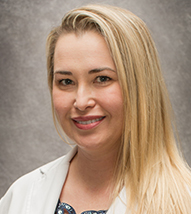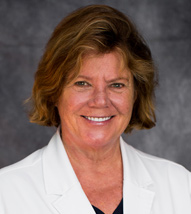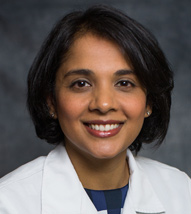Medical Center Radiologists staff the Comprehensive Breast Centers at Sentara Norfolk General Hospital, Sentara Leigh Hospital and Bon Secours Health Center at Harbour View; diagnostic and screening mammograms at Sentara Greenbrier Advanced Imaging Center and screening mammograms at Sentara Independence Advanced Imaging Center. The experienced technologists and staff at these centers provide you with compassionate, expert care in a comfortable and private setting.
Available Services
Imaging Procedures
- Digital screening and diagnostic mammography – For more information, please click here
- Breast Ultrasound – For more information, please click here
- Breast MRI - For more information, please click here
Interventional Procedures
- Stereotactic breast biopsy – For more information, please click here
- Ultrasound-guided breast biopsy - For more information, please click here
- MRI-guided biopsy - For more information, please click here
- Needle localization for surgery - For more information, please click here
- Ductogram - For more information, please click here
To schedule a mammogram at a center staffed by MCR mammographers, choose a convenient location:
Facility
Address
Scheduling
Dorothy G. Hoefer Comprehensive Breast Center
11803 Jefferson Ave, Newport News, VA 23606
Sentara Williamsburg Comprehensive Breast Center
400 Sentara Cir, Williamsburg, VA 23188
Sentara Careplex Hospital
3000 Coliseum Dr, Hampton, VA 23666
Bon Secours Health Center at Harbour View
5838 Harbour View Blvd
Suffolk, VA
Bon Secours Women’s Imaging Ghent Station
930 W 21st Street Suite 105
Norfolk, VA
Bon Secours Women’s Imaging, Portsmouth
5600 Portsmouth Blvd
Portsmouth, VA 23701
Sentara Norfolk General Comprehensive Breast Center
600 Gresham Drive
Norfolk, VA
Sentara Leigh Comprehensive Breast Center
880 Kempsville Rd
Norfolk, VA
Sentara Greenbrier Advanced Imaging Center
713 Volvo Parkway
Chesapeake, VA
Sentara Independence Advanced Imaging Center
800 Independence Blvd
Virginia Beach, VA
Mammography
What is Mammography?
Mammography, also known as a mammogram, is the examination of the breast using x-rays. Mammography is considered the most effective tool for early breast tumor detection. Most medical experts agree that successful treatment of breast cancer often is linked to early diagnosis. Mammography plays a central part in early detection of breast cancers because it can show changes in the breast up to two years before a patient or physician can feel them.
Our Practice uses digital mammography. Also known as a full-field digital mammography, digital mammography allows the radiologist to alter the orientation, magnification, brightness and contrast to produce images of the breast that can be seen on a computer screen. Computer-aided detection, or CAD, uses a digitized mammographic image to search for abnormal areas of density, mass, or calcification that may indicate the presence of cancer. The CAD system highlights these areas on the images, alerting the need for further analysis.
What are the advantages of digital mammography and computer-aided detection?
- Compared to conventional mammography that takes 10-15 minutes, digital mammography images are taken in less than a minute.
- The superior contrast resolution of digital mammography and its ability to manipulate images make for more accurate detection of breast cancers.
- Computer-aided detection, or CAD, obtains a second, computerized reading in the hope of finding more cancers or more accurately gauging signs of malignancy.
- Digital mammograms can be archived in various ways and easily retrieved, and copied.
How often should I have a mammogram?
Current guidelines from the U.S. Department of Health and Human Services (HHS), the American Cancer Society (ACS), the American Medical Association (AMA) and the American College of Radiology (ACR) recommend screening mammography every year for women, beginning at age 40.
The National Cancer Institute (NCI) recommends that women who have had breast cancer and those who are at increased risk due to a genetic history of breast cancer should seek expert medical advice about whether they should begin screening before age 40 and about the frequency of screening.
When should I schedule my mammogram?
Before scheduling a mammogram, you should discuss problems in your breasts with your doctor. In addition, inform your doctor of hormone use, any prior surgeries, and family or personal history of breast cancer. Generally, the best time is one week following your period. Do not schedule your mammogram for the week before your period if your breasts are usually tender during this time. Always inform your x-ray technologist if there is any possibility that you are pregnant.
How should I prepare for a mammogram?
On the day of the exam:
- Do not wear lotion, deodorant, or powder under your arms or on your breasts
- Describe any problems you’re experiencing with your breasts with your technologist
- Remove all jewelry and clothing from the waist up. You will be given a gown that opens in the front
What should I expect during this exam?
To image your breast, an x-ray technician will position you near the machine and your breast will be placed on a platform and compressed with a paddle. Breast compression is necessary in order to:
- Even out the breast thickness – so that all of the tissue can be visualized.
- Spread out the tissue – so that small abnormalities won’t be obscured.
- Allow use of a lower x-ray dose.
- Hold the breast still – to eliminate blurring of the image caused by motion.
- Reduce x-ray scatter – to increase picture sharpness.
The technologist will go behind a glass shield while making the x-ray exposure. You will be asked to change positions slightly between views. The process is repeated for the other breast. Routine views are a top-to-bottom and side view.
What will I experience during the procedure?
The exam takes about a half an hour. The technologist will apply compression on your breast and, as a result, you will feel pressure on the breast as the compressor squeezes it. Some women with sensitive breasts may experience some minor discomfort. Be sure to inform the technologist if pain occurs as compression is increased. If discomfort is significant, less compression will be used.
For more information on this topic, please visit www.Radiologyinfo.org.













